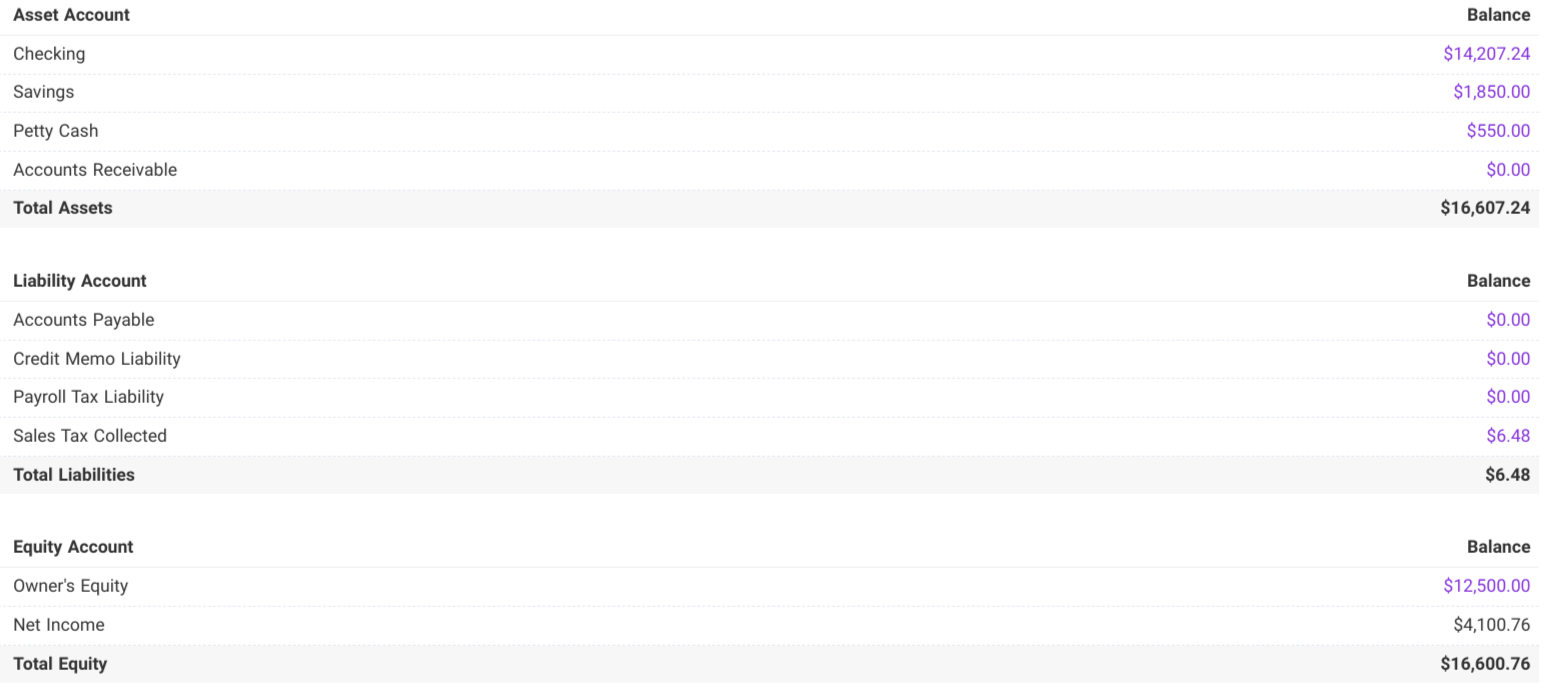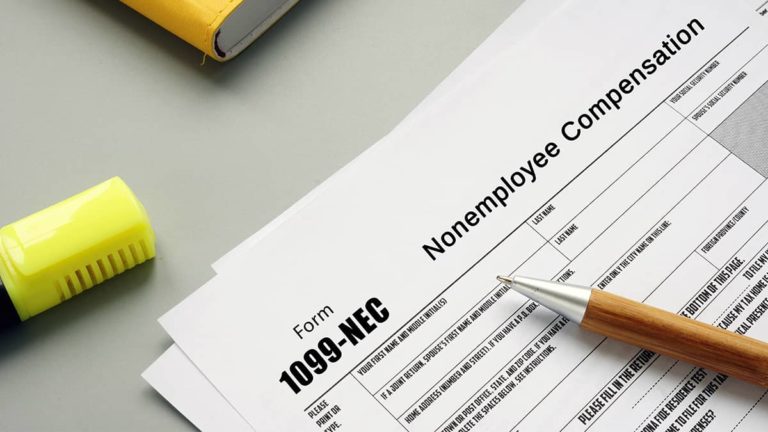When it comes to running a business, you can’t ignore your finances. To help you keep your finances in order and organized, you can look at financial statements, like your balance sheet. But, what is a balance sheet exactly? Let us give you the rundown on the balance sheet definition, the components of the financial statement, and how you can use it to keep your books in a row.
What is a balance sheet?
A business balance sheet is a financial statement that includes information about your business’s assets, liabilities, and equity. The statement shows a snapshot of what your company owns and owes as well as how much shareholders have invested in your business.
Your balance sheet comes in handy when you are managing your books and looking at your business’s finances.
The balance sheet is one of the four main financial statements. The other financial statements that you should be monitoring regularly include:
- Cash flow statement
- Income statement
- Statement of retained earnings
Your financial statements can give you major insights into the financial health of your business. Plus, they can help you answer some oh-so-important questions, like:
- How much am I making?
- Can I pay my bills on time?
- How much is my business worth?
- Can I pay my employees? What about myself?

Components of an accounting balance sheet
There are three main components of a balance sheet:
- Assets
- Liabilities
- Equity
Ready to break ‘em down?
Assets
Assets are what your business owns. This can include physical and non-physical properties that add value to your business, such as:
- Vehicle
- Computer
- Trademarks
- Inventory
- Buildings
- Patents
When you create a balance sheet, divide assets into two parts: current and noncurrent. You can turn current assets into cash within a year. On the other hand, turning noncurrent assets into cash takes more than a year.
Liabilities
Your business liabilities include what your business owes (aka, expenses you incur but haven’t paid yet). Some examples of liabilities include:
- Loans
- Accounts payable
- Bonds
- Unpaid invoices
- Accrued expenses
Like assets, you can divide liabilities into two categories: current or noncurrent liabilities. You pay current liabilities within a year (e.g., utilities). Noncurrent liabilities take more than a year to pay, such as long-term loans or mortgages.
Equity
Equity is the difference between your assets and liabilities. To calculate equity, all you have to do is subtract your business’s liabilities from its assets. Equity represents ownership in the business and can tell you what is left over after paying off expenses and debt.
Balance sheet formula
A balance sheet should do exactly what it sounds like it should do … balance. If it doesn’t, you need to find the discrepancy and pinpoint the accounting errors you made. Otherwise, you could wind up with inaccurate financial records and reports.
Again, your balance sheet tells you all about your assets, liabilities, and equity—and if they balance. To help ensure your balance sheet is in order, use the following formula:
Assets = Liabilities + Equity
On your balance sheet, your total assets should equal your total liabilities plus your total equity (just like the formula above). If your balance sheet does not balance, you may have a problem on your hands.
Balance sheet example
Not sure what a balance sheet looks like? Here’s an example of a balance sheet to help you out:

Importance of financial balance sheet
The balance sheet is the best indicator of your business’s current and future health. You can use your balance sheet for internal purposes and to talk about your business to people outside your company (e.g., investors).
Your business balance sheet can also help you:
- See how much leverage you have
- Understand your company’s liquidity
- Determine how efficiently you use your assets
- See your rate of return
- Find out if your pricing strategy is effective
- Get your spending under control
Your balance sheet is like a photograph of your business’s finances. It shows a snapshot of your health during a single moment in time. By evaluating your balance sheet, you can dig deep into where you stand financially. The snapshot gives you insight into your company’s overall stability so you can make smart and guided decisions.
Need an easy way to track your business’s transactions? Patriot’s online accounting software makes it a snap to keep your income and expenses in order. Plus, you can download a balance sheet in just a couple of clicks! Try it for free today!
This article was updated from its original publication date October 3, 2014.
This is not intended as legal advice; for more information, please click here.




